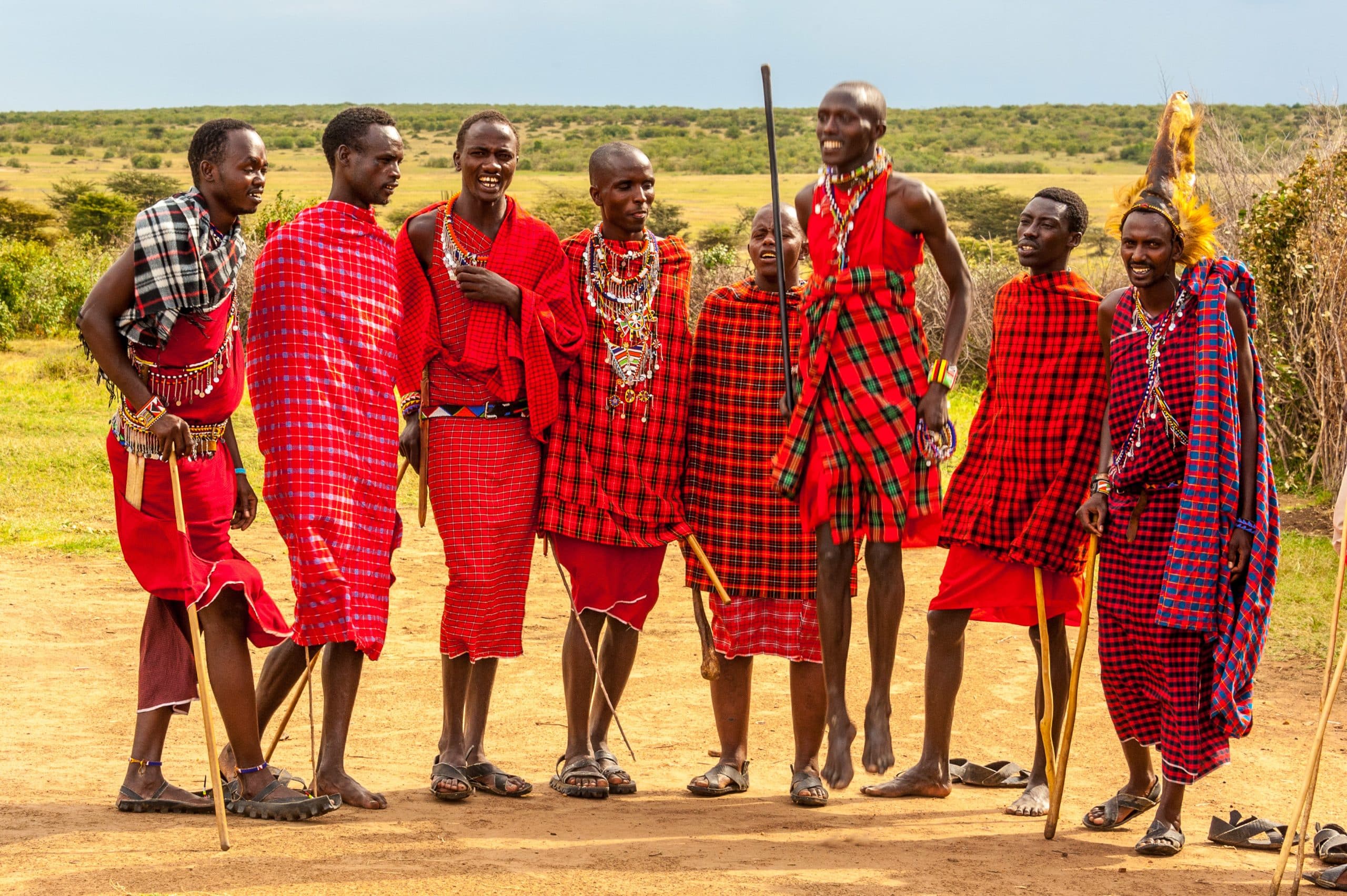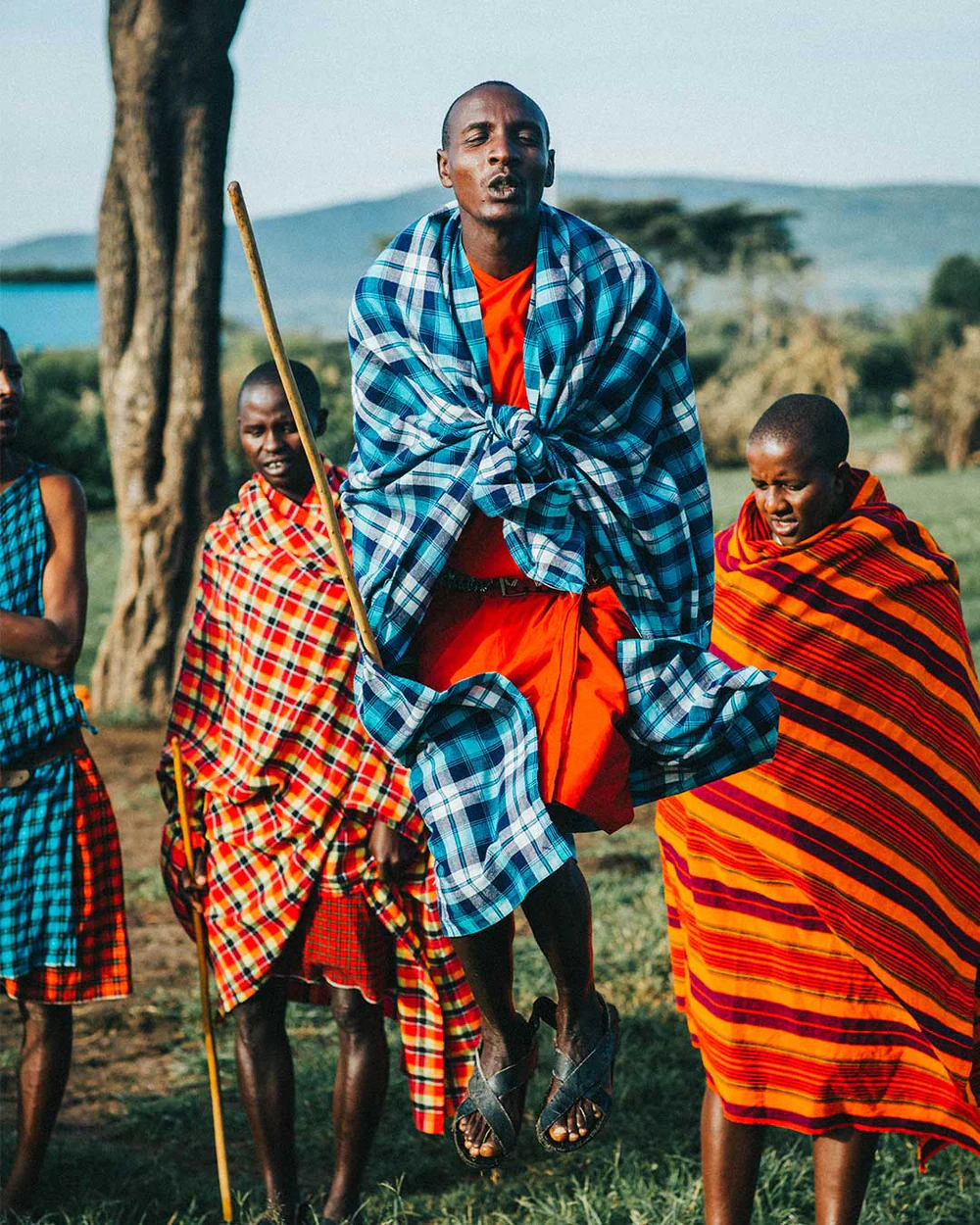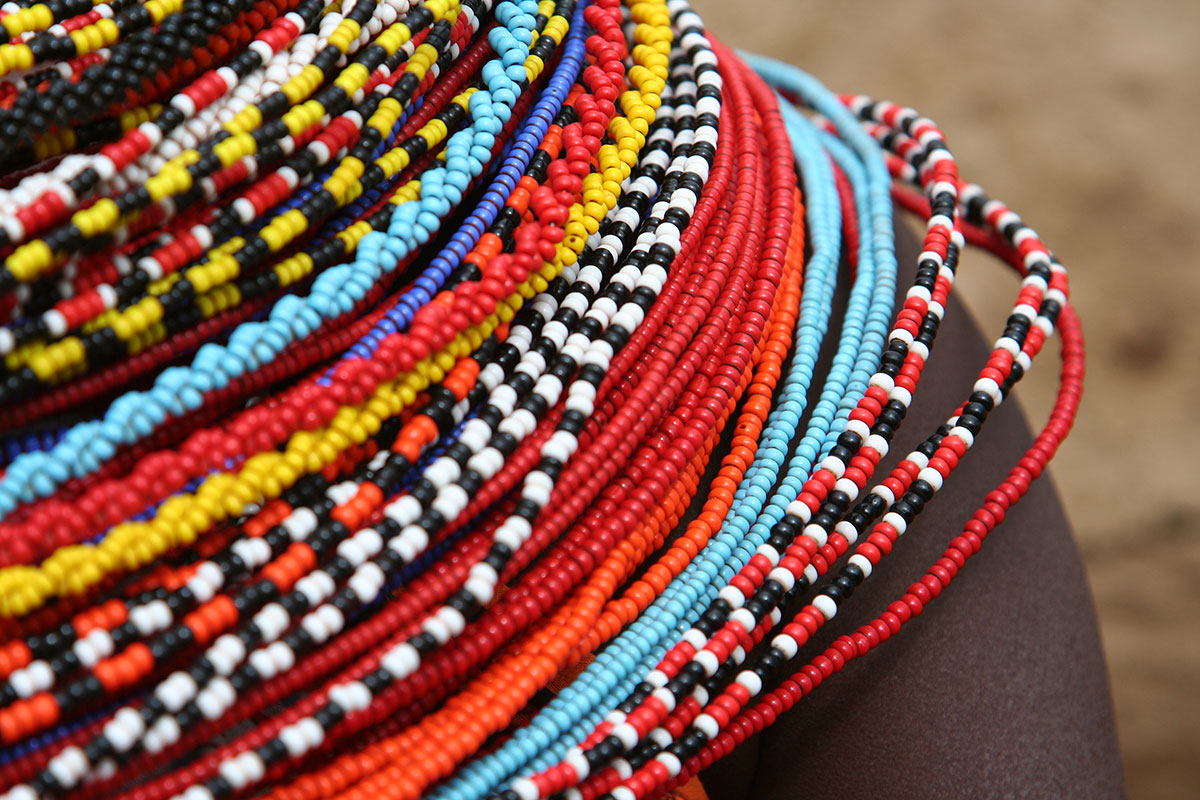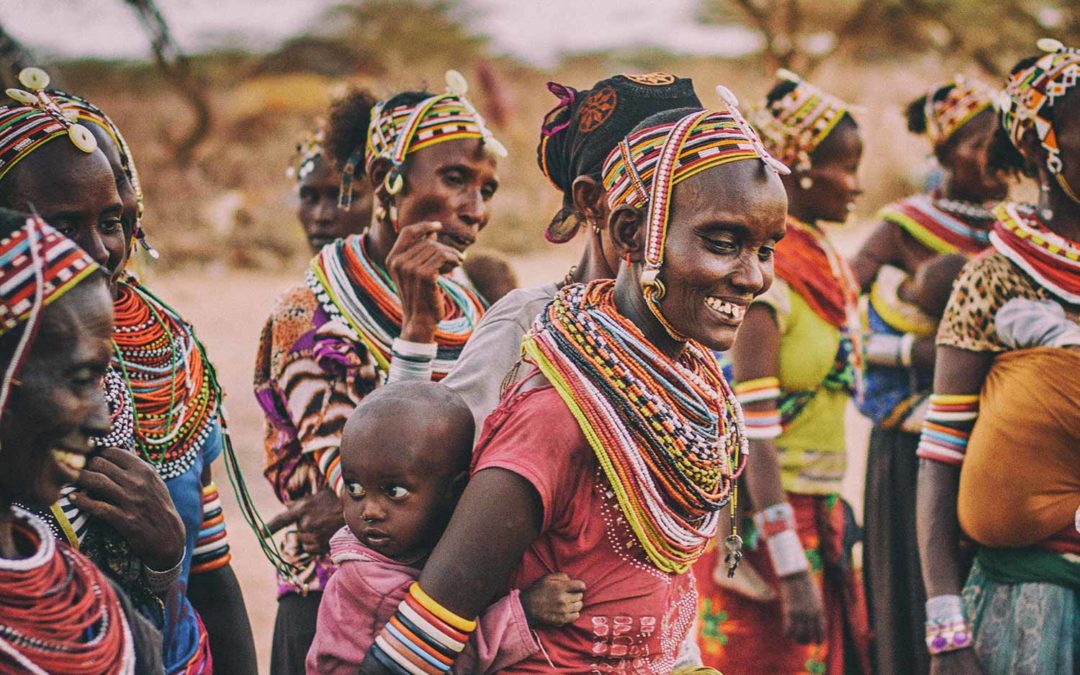
The Maasai people, a proud and vibrant ethnic group in Kenya, have a rich cultural heritage that is intricately woven into the fabric of their daily lives. One of the most visually striking aspects of Kenyan culture is the traditional Maasai jewelry. Adorned with colorful beads, intricate patterns, and symbolic meanings, Maasai jewelry is not only a form of personal expression but also a powerful representation of the community's values and history.
Embarking Into Maasai Culture - A Tapestry Of Tradition And Resilience
Nestled in the vast landscapes of East Africa, the Maasai people stand as custodians of a rich cultural tapestry that weaves through time. With a history stretching back centuries, the Maasai have become synonymous with the sprawling savannas and vibrant cultures of Kenya and Tanzania.
A Journey Through Time
As we delve into the heart of Maasai culture, we find ourselves traversing through the annals of time. The Maasai people, with a cultural history spanning centuries, have cultivated a way of life intricately connected to the land they call home. The vast savannas that stretch as far as the eye can see bear witness to the traditions and stories passed down through generations, creating a rich legacy that defines the essence of the Maasai.
Distinctive Attire
One cannot embark on an exploration of Maasai culture without encountering their distinctive attire. The vibrant red shuka, a traditional Maasai garment, drapes the warriors and elders, becoming a visual signature against the earth-toned backdrop of the African plains. This attire not only serves practical purposes, providing protection from the elements, but also encapsulates the spirit of the Maasai – bold, resilient, and deeply connected to their ancestral roots.
Warrior Traditions
The Maasai warriors, revered for their bravery and prowess, embody a legacy of strength and resilience. Steeped in tradition, the warrior class plays a vital role in safeguarding the community, both in times of peace and conflict. The rhythmic chants, vibrant dances, and distinctive jumping rituals of the Maasai warriors serve not only as displays of physical prowess but also as cultural ceremonies that link the present to a time when the Maasai defended their livestock and way of life.
Captivating Beadwork
The artistry of Maasai beadwork, with its intricate designs and vibrant colors, becomes a language unto itself. Beyond mere adornment, each bead tells a story – a narrative of age, social status, and cultural significance. From necklacesto bracelets, the Maasai use beadwork as a form of self-expression, creating wearable masterpieces that serve as both personal statements and cultural markers.
Intersecting Traditions With Modernity
While the roots of Maasai culturerun deep in tradition, the community has astutely embraced modern influences. The intersection of age-old customs with contemporary trends ensures the relevance of Maasai heritage in the modern world. This adaptive approach not only sustains the cultural identity but also introduces Maasai traditions to a global audience, fostering cross-cultural appreciation and understanding.
Renowned for their distinctive attire, warrior traditions, and captivating beadwork, the Maasai culture unfolds as a captivating narrative that mirrors both the challenges and resilience of a community deeply rooted in tradition. Join us on a journey into the heart of Maasai culture, where age-old customs intersect with the winds of change, creating a dynamic tableau of identity, spirituality, and enduring heritage.
Cultural Significance Of Maasai Beaded Jewelry
Unveiling The Language Of Beads
The intricate world of Maasaibeaded jewelry is a language unto itself, with each bead telling a story of age, social status, and cultural significance. The vibrant beadwork worn by an individual serves as a visual marker, conveying not just personal adornment but also a deep connection to the rich tapestry of Maasai culture.
Age And Social Status
In Maasai society, the beadwork one adorns is a dynamic reflection of age and social standing. The choice of colors, patterns, and arrangements in jewelry acts as a silent yet powerful communicator. Different age groups and social strata within the community are easily identified through the nuanced language of beads. Elders may wear distinct patterns, while the youth showcase vibrant and bold designs, creating a visual narrative of the wearer's place in the community's social fabric.
Colorful Insignia Of Social Standing
The vibrant hues of Maasai beadwork are not merely aesthetic choices; they are symbolic representations of social hierarchy. Individuals of higher social standing adorn themselves with more colorful and intricate jewelry, signaling not only their personal taste but also their esteemed status within the community. The beads become a visual proclamation of identity, a dynamic language that transcends spoken words.
Economic Impetus
Beyond their cultural significance, Maasai beadwork plays a crucial role in sustaining the community economically. For centuries, beadwork has been a source of income for the Maasai people. The trade of their intricate jewelry became globally recognized in the 19th century, as the Maasai engaged in commerce with neighboring tribes. Using locally available resources like clay, wood, bone, copper, and brass, the Maasai crafted jewelry that not only reflected their culture but also became sought-after commodities.
Evolution Through Trade - Glass Beads And Global Connectivity
In the late 19th century, the Maasai entered into trade with Europeans, leading to the introduction of glass beads along the trade routes in Africa. This marked a transformative period for Maasai beadwork, as glass beads became the primary material for crafting their iconic necklaces, bracelets, and other jewelry. Today, glass remains the predominant material, preserving the authenticity and continuity of this centuries-old tradition.
Modern Threads In Traditional Weaving
While the fundamentals of Maasai beadwork remain rooted in tradition, the tribe has embraced modern influences to ensure the craft's relevance in contemporary times. The fusion of traditional techniques with modern designs allows Maasai artisans to adapt to changing trends while safeguarding the authenticity of their cultural heritage. This adaptive approach not only sustains the craft but also introduces Maasaibeadwork to a global audience, fostering appreciation and understanding.
Colorful Symbolism In Kenyan Jewelry
Kenyan jewelry, particularly the beaded creations of the Maasai, is not only a feast for the eyes but also a canvas of cultural significance painted with vibrant hues. The intricate color patterns adorning Maasai bracelets and necklaces tell a compelling story, each shade carefully chosen and imbued with unique symbolism.
Embracing The Aesthetics
The beauty of Kenyan jewelry is undeniable, captivating anyone who lays eyes on the mesmerizing beadwork. The intricate patterns and skillful craftsmanship elevate these adornments to works of art, reflecting the cultural wealth and artistic prowess of the Maasai people.
Colors With Care
Beyond their visual appeal, the colors in Maasai jewelry are not chosen arbitrarily; they are selected with care and intentionality. Each hue carries a specific meaning, transforming the jewelry into a language that speaks of traditions, values, and the essence of communal life.
Symbol Of Bravery And Unity
Red beads, far from being chosen solely for their aesthetic allure, symbolize notions of bravery and unity. The vibrant red hues in Maasai jewelry represent the unity of tribal families and communities. Additionally, they may signify the blood of cows slaughtered during celebrations, reinforcing the themes of togetherness and communal harmony that are integral to Maasai culture.
The Color Of Cows And Good Health
White beads represent the color of cows in Kenyan jewelry, acknowledging the vital role these animals play in Maasai life. Cows provide milk, a staple in the Maasai diet, symbolizing good healthand nourishment within the tribe. Moreover, white beads embody notions of peace and purity, contributing to the holistic symbolism woven into the jewelry.
Nourishing The Earth And Cattle
Blue beads draw inspiration from the sky, a crucial element in sustaining Maasai cattle. Rainfall, symbolized by the color blue, nurtures the grass and earth, ensuring the well-being of the herds. This connection between the sky, rain, and cattle emphasizes the profound interconnectedness of nature and life in Maasai culture.
Symbol Of The Land And Earth
Green beads symbolize the land and earth that provide sustenance for Maasai cattle. Reflecting the fertility of the earth and the abundance it brings, green becomes a visual representation of the close relationship between the Maasai people and their environment.
Black: Harmony, Solidarity, And Identity
Black beads embody the color, solidarity, and harmony of the Maasai people. This deep, rich hue represents a collective identity and a sense of unity within the community, creating a visual thread that binds individuals together.
Orange And Yellow
Colors like orange and yellow signify hospitality, mirroring the shades of gourds traditionally used to serve visitors cow's milk. These warm tones extend a welcoming gesture, emphasizing the hospitality deeply ingrained in Maasai culture.
A Poignant Statement
The fusion of these vibrant colors in Maasai jewelry creates a poignant statement, echoing themes of love, respect, and appreciation for life and family. Each bead, carefully chosen and meticulously arranged, becomes a testament to the profound cultural values embedded in the heart of Kenyan jewelry.
Traditional Maasai Jewelry - FAQs
What Is Masai Jewellery?
Maasai jewelry is a traditional form of adornment crafted by the Maasai people, an ethnic group primarily residing in Kenya and Tanzania. This unique jewelry is characterized by vibrant beadwork, intricate patterns, and symbolic designs. The materials used include colorful glass beads, wire, and sometimes elements like cowrie shells. Maasai jewelry is not merely ornamental; it serves as a visual language that conveys cultural, social, and personal messages within the community.
Why Do Maasai Wear Jewelry?
The Maasai wear jewelry for multifaceted reasons deeply rooted in their cultural traditions. Adornments play a crucial role in expressing identity, social status, and age within the community. Each piece of jewelry, whether it be necklaces, bracelets, or earrings, is symbolic and reflects the wearer's place in Maasai society. Additionally, the jewelry holds cultural significance in ceremonies, rituals, and daily life, acting as a tangible representation of the community's values and history.
What Do The Maasai Bracelets Mean?
Maasai bracelets, like other forms of Maasai jewelry, carry significant meanings within the cultural context. The bracelets, often made with intricate beadwork and vibrant colors, are not just decorative; they are laden with symbolism. The colors and patterns of the bracelets can signify the wearer's age, social status, and even specific events or milestones in their life. For example, red beads may symbolize bravery, unity, and the blood of cows slaughtered during celebrations, while white beads represent good health, peace, and purity. Each bracelet, therefore, becomes a wearable narrative that communicates the wearer's identity and cultural affiliation within the Maasai community.
Conclusion
Maasai jewelry is more than just adornment; it is a living testament to a proud and resilient community's history, values, and identity. As the Maasai people navigate the challenges of the modern world, their traditional jewelry stands as a beacon, a symbol of cultural continuity and the enduring spirit of a people deeply connected to their heritage.


